Morocco stole my heart. I was on a five-week journey with my husband, Steve, touring Portugal, Spain, and Morocco. The European part was all enjoyable, but when I arrived in Tangier (Tanger in French), something changed. I felt more alive, my senses blazing with the sights, smells, flavors, and ambiance of the place. My introduction to Morocco was everything I hoped, and I couldn’t wait to see more.
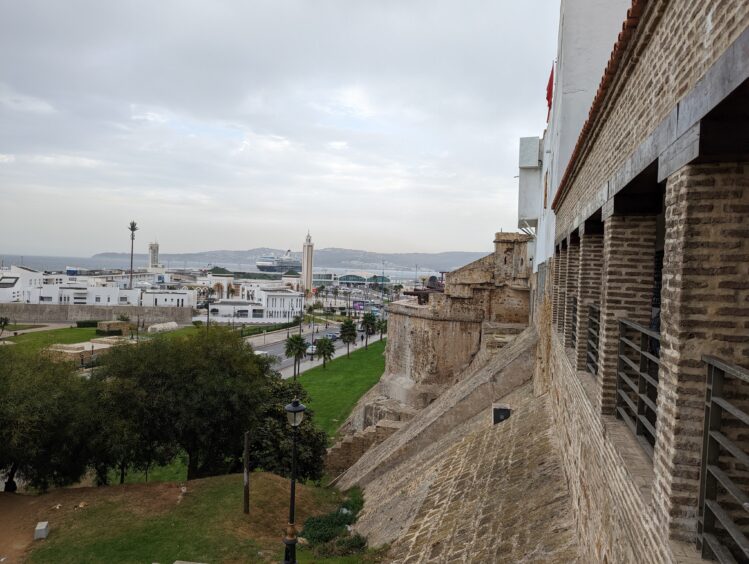
I had many questions about Morocco before I visited. Was it safe? How would I feel as a woman in a Muslim country? Would touts hassle us? Were the trains dangerous? Would we be able to communicate in English or did we need to know French or Arabic? Was it easy to travel on our own or would we be better off getting a guide or joining a tour? We prefer to travel independently, so we gave it a go. We knew we could always get a guide once we were there if we needed to. Once we arrived, our fears were assuaged, we felt safe, and it was easy. I’ll outline what we did and offer some tips.
See my article: Two Week Road Trip Through Portugal and Spain
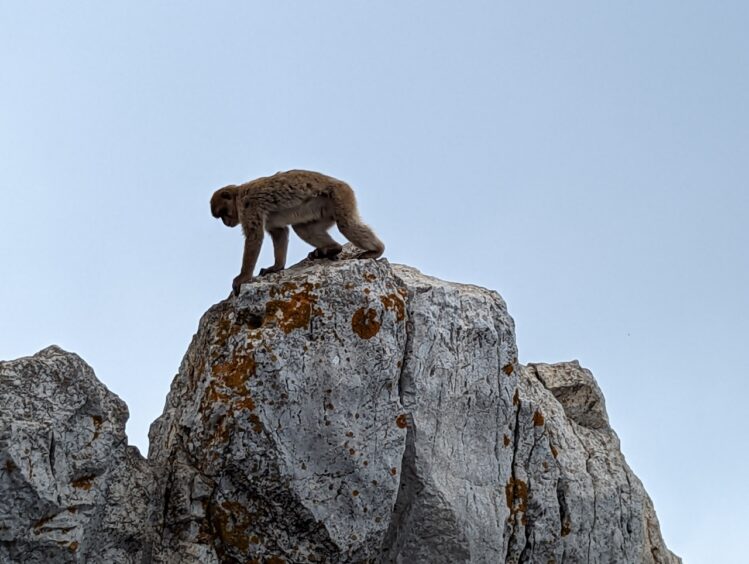
A road trip through Spain and Portugal preceeded our visit to Morocco. After renting a car from Hertz in Madrid, we headed east and drove a big U-shaped route through Portugal, dropping the car in Seville. To get to the southern coast where we could catch a ferry to Morocco, we took a bus (clean, comfortable, on time, and inexpensive) to Algeciras, Spain. We chose this port city because it was next to Gibraltar. I was consumed with a desire to spend a day at the Rock of Gibraltar, in the unique British Overseas Territory hanging off the tip of the Iberian Peninsula. It was worth it, and I loved exploring the tunnels and views of the rock and enjoyed fish and chips in town.
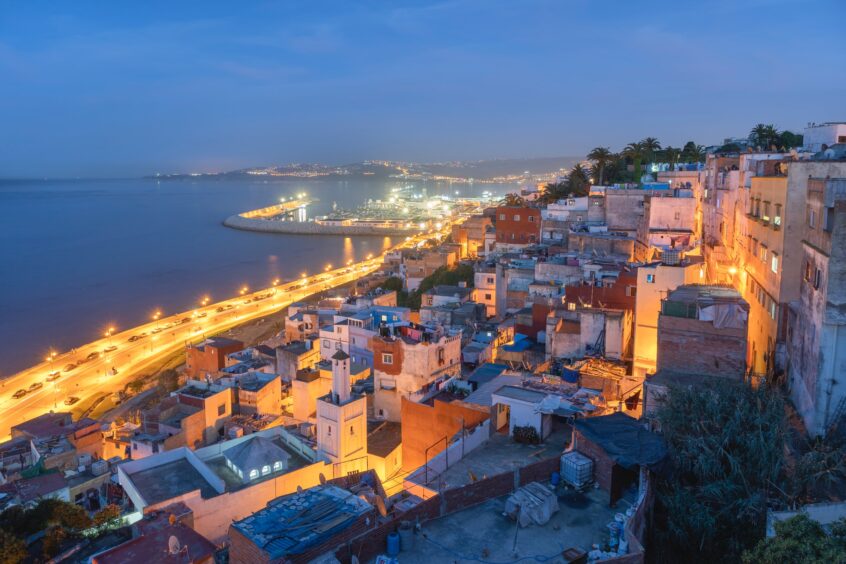
There are two ferry routes. We took the 90-minute AML ferry from Algeciras to Tanger Med, an industrial port complex in Morocco, about an hour from Tangier by taxi. AML is just one of several ferry operators based in Algeciras. We went through passport control on the boat and security in the Tanger Med terminal before finding at ATM where we withdrew Moroccan dirhams. Money changers were available, as well. Taxis were available outside the terminal and we enjoyed the pleasant scenery along the northern coast of Morocco.
A second ferry route goes from Tarifa, Spain, about 30 minutes west of Algeciras, directly to Tangier. If you’re in a hurry, this route features a jet boat that only takes an hour and saves the long taxi ride.
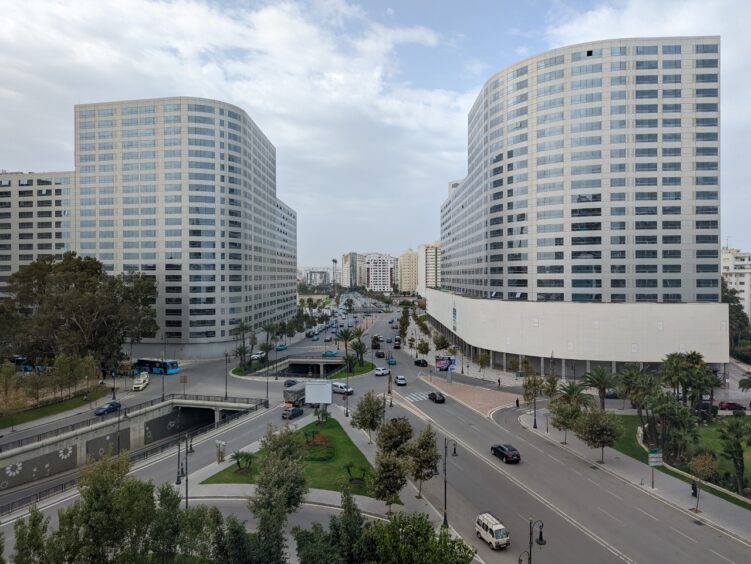
I originally thought we’d only have time to dip a toe into Morocco with an overnight in Tangier. I didn’t know if it would be worth it—I’ve been in some port cities that were entirely too gritty, industrial, and unsafe to be enjoyable. However, I found Tangier to be a wonderful city that would be the perfect introduction to the country. If that’s all you have time for, head over and if you love it as much as I did, you can start planning your next trip. As it happened, I managed to carve out 10 days in Morocco, stealing a few days from our Portugal and Spain itinerary, and was glad I did. Visiting Fez (Fes), Marrakech, the High Atlas Mountains and the Sahara Desert were highlights of the trip for me.
We stayed at the Ibis Hotel, a mid-range Accor chain we’ve used all over the world. The location surprised me. It was in the center of a gleaming, modern metropolis full of chrome and glass with wide boulevards and well-behaved traffic. Best of all, for us, was its position a block from the train station, where we departed from. They served breakfast and had a well-stocked bar, usually populated with men, but we were able to get a glass of wine and sit in a quiet corner of the restaurant. Many restaurants don’t serve alcohol, but the western hotels usually do.
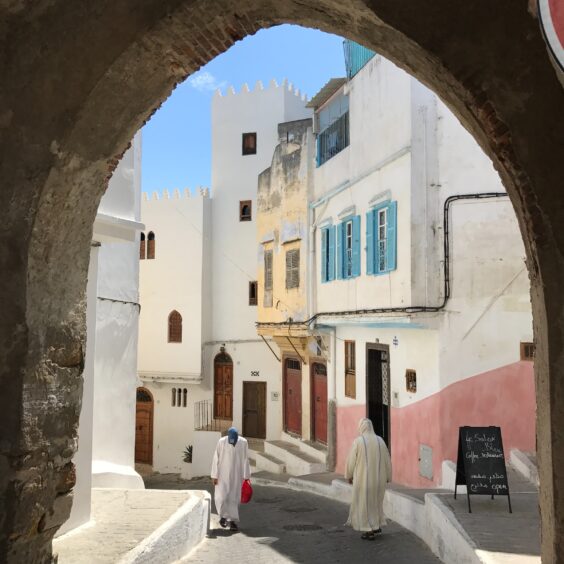
We caught a cab from the Ibis Hotel to the medina. This being my first medina, I didn’t know what to expect and was immediately charmed by the narrow streets, ancient history dating back to the 14th century and overflowing stalls of fish, spices, olives, rugs, flowers, and sundries. We enjoyed strolling the streets and attempted to head to some sights listed in our Lonely Planet Morocco guidebook, understanding that if it was impossible to navigate, that would be OK. We were there to soak up the atmosphere.
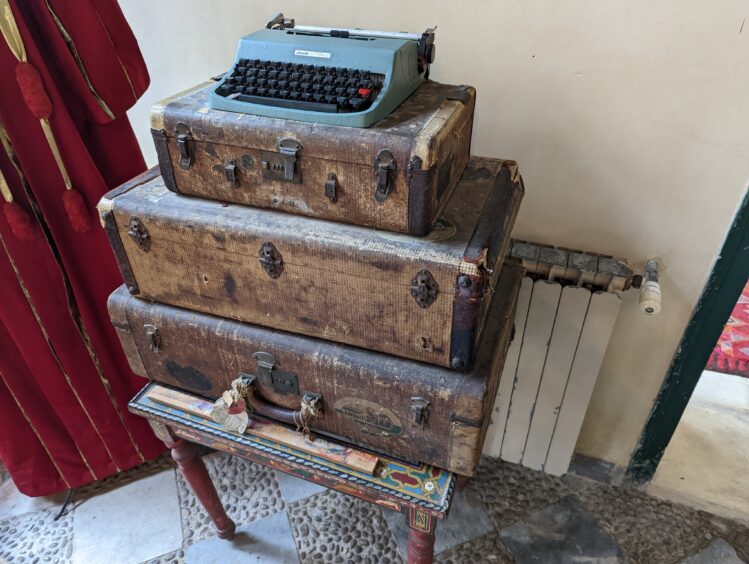
Amazingly, Google Maps managed to get us to the Tangier American Legation Museum. I was not familiar with the word legation, which is a diplomatic office that isn’t quite an embassy. It’s the only US National Historic Landmark located in a foreign country. That sounded intriguing enough to visit. It fascinated me to learn that Morocco was the first country to recognize the US when it gained independence from Great Britain and the legation office was the first American public property abroad. The museum is well worth a visit.
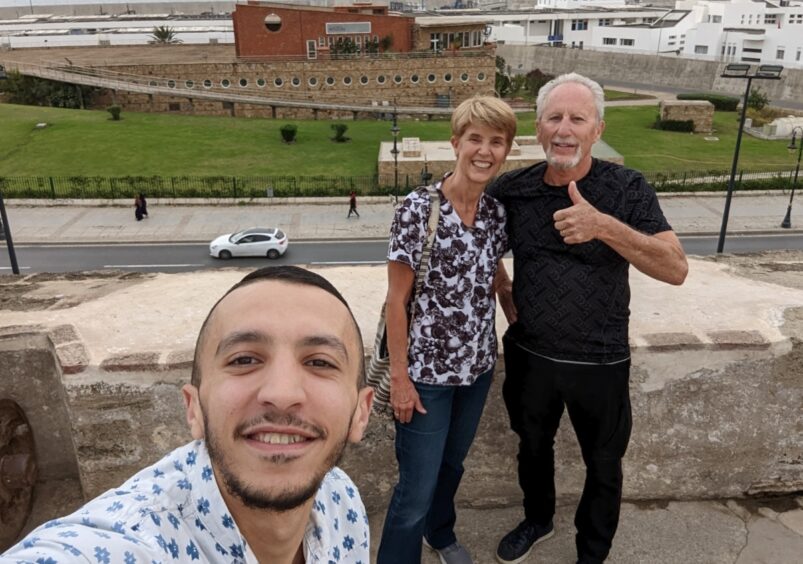
Our worst fears about touts were realized, but it was amusing more than anything. We succumbed to a tout, but he was so young and innocent with his proclamation that he wasn’t a guide, just a student learning English that we could hardly be mad. He said we were going the wrong way to the kasbah but, of course, he could show us the way. He led us to the original castle dating from the 10th century, and our suspicions were confirmed when the “student-practicing-English” invited us to share some mint tea with his friend—who turned out to own a large rug store. We played along, enjoyed the tea, admired the rugs, declined to buy one, paid off our “guide” and laughed at how rusty we were. Never mind, it was good value and a good lesson.
After that, a firm “no, thank you,” bolstered by the translation provided by Google Translate was all that was needed. My first Arabic words were la shukran. If you learn no other words in Arabic, learn these and repeat politely, with a slight smile, and there will be no more problems. In fact, we found touts were much less aggressive than other countries we’ve been in and one la shukran was all it took for them to melt away. We never felt unsafe and most Moroccans we interacted with were polite and respectful.
Many Moroccans in major tourist areas speak English (and Spanish, French, German, Portuguese, Italian and more—what’s wrong with us in America that we are monolingual?) and menus might be printed in English. If not, they are usually printed in French and Arabic, so Google Translate can come to the rescue. I saved a list of translations in the app for common phrases and foods in both languages, including words for chicken, beef, fish, tuna, couscous, rice, beer, etc.
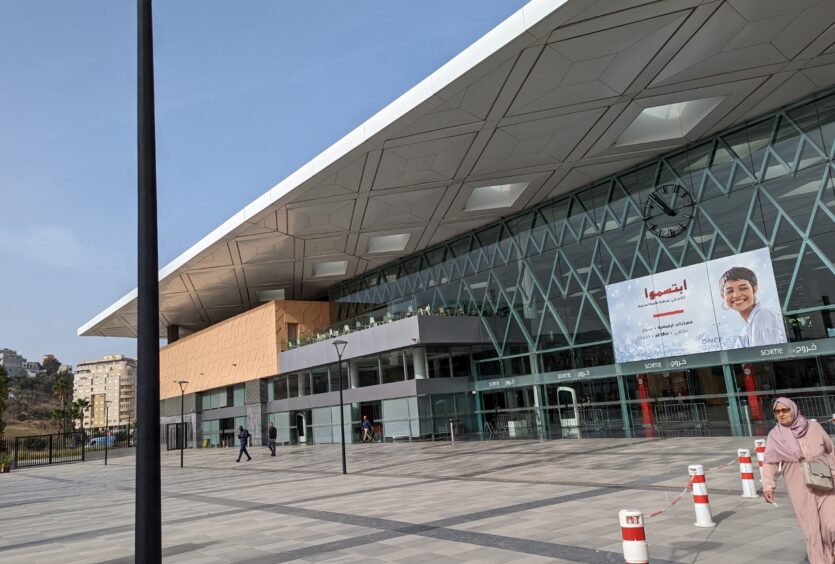
ONCF is the Moroccan train operator, and their website is available in English, though it can be glitchy. They should accept non-Moroccan credit cards, but if there are issues, use Bookaway, which is what we used.
There is a high-speed train, but the route is limited, traveling between Tangier and Casablanca. We took classic trains, which were clean, comfortable and air-conditioned. We bought first-class tickets with reserved seats in a 6-person compartment for trains from Tangier to Fez and from Fez to Marrakech.
The impressive train station in Tangier Ville was large, modern, bright, and airy, with high ceilings, plenty of seating and a foot court. We each had a small roller bag and laptop backpack, so it was easy to walk 5 minutes from our hotel to the station.

Temperatures ranged from pleasant 70s F to low 90s F in October. I dressed conservatively, as I always do in Muslim countries, with long wide-legged palazzo pants, and kept my shoulders covered with short- or long-sleeve shirts. I brought a white linen button down shirt I used as a light coverup and only needed my light down jacket in the desert at sunrise when it was chilly. My husband wore long pants. You don’t see Moroccan women with arms or legs exposed, nor do you see Moroccan men in shorts. I brought a scarf to cover my head but never needed it.
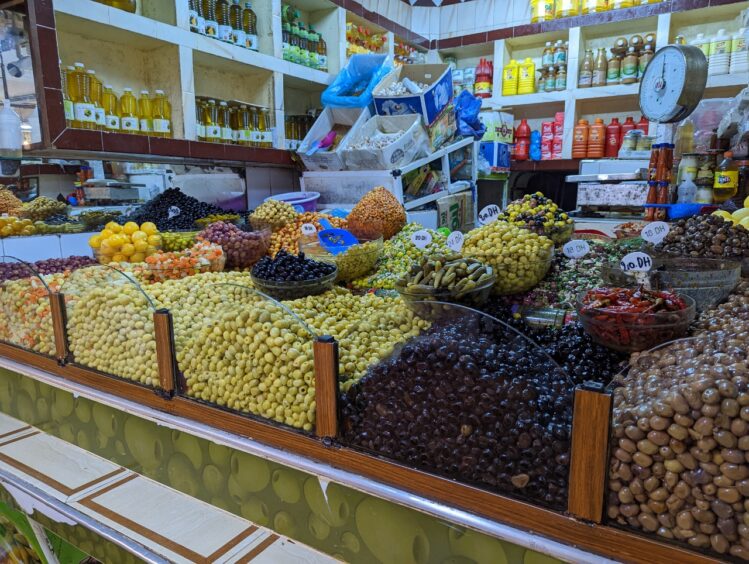
My introduction to Morocco was everything I hoped and if I had only had one night in Tangier, I would have seen a medina, kasbah, modern city and enjoyed delicious meals. I’m glad I had more, though, and I hope to return someday soon.